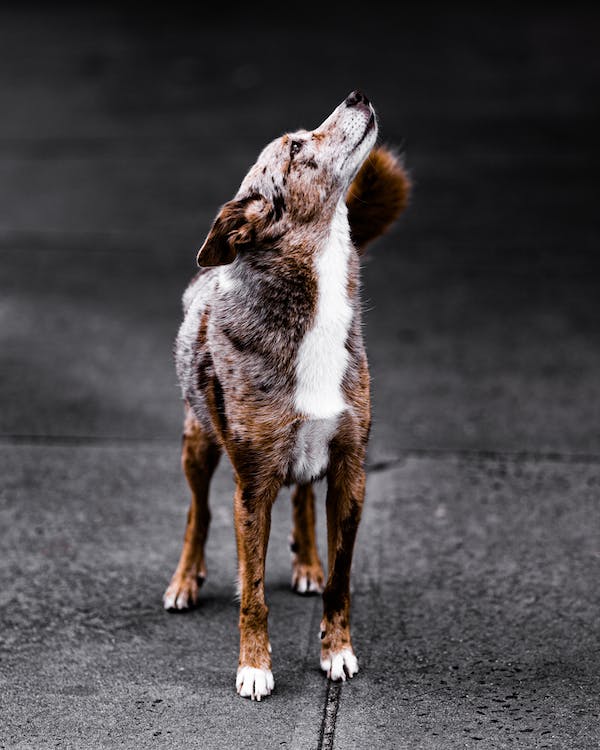Dog breeds are iconic, serving as familiar examples for how genetic selection can produce a diverse array of biological traits from appearance to physiology to behavior. Genome-wide analysis and large-scale surveys of companion dogs—pedigreed and mixed-breed—re-evaluates how much a dog’s breed genetically influences how they look and behave.
Views 3087
Reading time 3.5 min
published on Aug 28, 2023
Very little in genetics is determinate—least of all, behavior. Behaviors are dynamic processes by which animals respond to their environment to survive, and evolution can shape genes affecting behavior over generations. Genetic selection may be even more dramatic in domestic animals due to human influence over breeding (e.g., egg-laying capacity in different chicken breeds). Genes contribute to the appearance, health, and behavior of our closest companions, but how much of what we love and worry about for our pets has been written into their DNA?
Dogs have lived by our sides for over 10,000 years. Throughout history, people have kept and bred dogs who helped us herd, hunt, and guard our resources, influencing the inheritance of these behaviors in canine lineages. Today, people more closely control dog reproduction than ever before. Unlike in the past, when dog breeding was less formalized, modern dog breeds are bred primarily for pedigree and conformity. To be considered purebred, dogs must not cross-breed with dogs outside their breed and must display traits consistent with their breed standard.
Breed standards prescribe how a dog is supposed to look and act as a proper representative of its breed. Bernese mountain dogs should be tri-colored (black, tan, and white), large (25 to 27.5 inches tall), and “intelligent, strong and agile”. Breeds are expected to show behaviors from their historical lineage. By extension, dog breeds have been profiled for all aspects of canine behavior, from ease of training, to activity level, to cuddliness. These ascribed profiles set our expectations for individual dogs based on breed, even for mixed-breed dogs.
When scientists wanted to find out which genetic changes affect how dogs look and behave, they compared dog breeds, and their DNA. This means finding what parts of DNA differ most across breeds and assigning functions based on traits that appear to differ for those breeds. For example, genes affecting body size differences have been found by comparing small and large breeds to one another.
But not all characteristics are straightforwardly assigned to breeds. Breed-to-breed comparisons find what is most genetically distinct between populations but figuring out what each gene does requires a few assumptions. The breed standard for dalmatians, for instance, states that these dogs should be free from shyness. So, we must assume that (1) every dalmatian genetically sampled is not shy, (2) dalmatians are distinctly bold among breeds, and (3) the genetic differences found explain shyness. These assumptions finding the genes for shyness versus boldness by comparing dog breeds very difficult.
Alas, a dalmatian cannot be separated from its spots!
Enter mutts: dogs who have mixed-breed ancestry. By randomly assorting traits from their ancestors, mixed-breed dogs let us better test what each particular gene does. Firstly, we can examine the behavior of each individual dog more precisely without those measurements being accidentally linked to their physical appearance. This is difficult to achieve within breeds. Secondly, we can look at the genetic changes responsible for different traits at a DNA level. All the different combinations of chromosomes in each mutt make it easier to link distinct DNA regions to trait differences.
These mutts let us check whether a dog’s ancestry affects their behavior and whether any genetic changes connected to behavior could be linked to specific dog breeds. We asked people to fill out surveys about their dogs and sequenced the DNA of individual dogs from a variety of backgrounds (pedigree and mixed-breed), and measured breed ancestry. By modeling the relationships of genetic ancestry with physical appearance and behavior in mixed-breed dogs, we could tell, for example, that having more beagle ancestors in a dog’s family goes along with more frequent howling, a behavior that beagles and other hounds alike display more than other dogs. We also found many behaviors do not have breed effects inherited by mutts, even behaviors that characterize breeds.
We then tested whether genetic variants linked to appearance or behavior across the genomes of these dogs were selectively bred into dog breeds. Overwhelmingly, regions of DNA governing traits like coat color, pattern, and type were what distinguished breeds, suggesting that modern dog breeding focuses most on a dog’s physical appearance. The same could not be said for regions of DNA linked to behavior, though we found strong evidence that genetics contributes to functional behaviors like retrieving, pointing, and howling. These results suggest that inherited behaviors likely showed up in dogs long ago, well before the establishment of breed clubs.
Original Article:
Morrill, K., Hekman, J., Li, X., McClure, J., Logan, B., Goodman, L., Gao, M., Dong, Y., Alonso, M., Carmichael, E., Snyder-Mackler, N., Alonso, J., Noh, H. J., Johnson, J., Koltookian, M., Lieu, C., Megquier, K., Swofford, R., Turner-Maier, J., … Karlsson, E. K. (2022). Ancestry-inclusive dog genomics challenges popular breed stereotypes. Science, 376(6592). https://doi.org/10.1126/science.abk0639
 Evolution & Behaviour
Evolution & Behaviour



